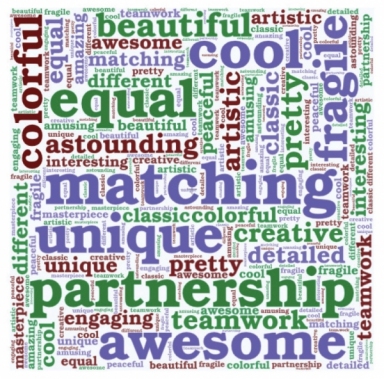Latest News
Artful Learning: Love in the Time of COVID-19
Posted July 7, 2020
by Patrick Bolek
Printed in the Summer 2020 issue of Prelude, Fugue & Riffs

Grade 4 Student Grid Drawing inspired by Monet’s Water-Lily Pond.
One of Leonard Bernstein’s lasting legacies was his encouragement of the love of learning within all of us—particularly by using the arts and creativity. Six brilliant educators from across the country are perpetuating that vision during the current pandemic by adapting the Artful Learning model for all of their remote learners. These educators possess a combination of ravenous curiosity and masterful capacity. They use wildly inventive methods to engage their students while blending technology, academic rigor, and artistic fluency.
Despite the varying guidelines that school districts across the country provide for teaching students, the Artful Learning framework ingeniously offers ways to enhance learning in every situation. The arts-based skills and strategies, specially adapted for Distance Learning, are applied to each classroom’s Unit of Study, inviting students to produce inventive solutions. Options for students to return their work included: recording videos using various apps; uploading assignments onto a shared online drive; or even good old snail mail. In addition to contributing their strategies across all curricula, these Artful Learning Educators provided the students with immediate constructive feedback in real-time, thereby taking some of the home-schooling burdens off the adults at home.
To cite just one example: Beth McCoy is an Advanced Trainer and classroom practitioner of the Artful Learning model at Hillcrest Community School (Bloomington, MN). To help her students explore the concept of perspective, she devised an inventive approach using the arts-based skill and strategy known as Grid Drawing. Students received a packet in the mail containing a one-inch square showing a portion of an unidentified image; McCoy did not tell them what the larger picture was. Using the online apps of Screencastify and Google Meet, McCoy provided guided instruction through an online tutorial to support her students, who would need to work independently to complete the task. Using geometric principles of perimeter, area, and scale, students enlarged the image, then recreated it on paper using whatever art materials they had at home. Students then returned their grid square in a self-addressed stamped envelope provided by McCoy, who presented an updated photo of the evolving picture through the Seesaw app. Daily discussions about the successes and challenges of using an arts-based strategy to delve deeper into elements of congruence, quadrilaterals, and value helped build the anticipation. With the picture assembled, the entire class witnessed an exciting reveal of Claude Monet’s Water-Lily Pond 1 via a time-lapse video created by McCoy using Google Slides.

The fourth and final component of the Artful Learning model—after Experience, Inquire, and Create—is to Reflect. McCoy’s students discussed and documented their experiences and processes in creating their squares. Students commented that not being able to see what others were doing while working in isolation created a higher level of risk. As a final creation, students used academic vocabulary linked to the unit to form a Word Cloud (at left). This exuberant expression of their educational experience says it all.
Follow us on Instagram and Twitter @artfullearning
Patrick Bolek serves as the Executive Director of Artful Learning, Inc. and welcomes your conversation and support toward this important work. Please reach out to patrick@artfullearning.org.